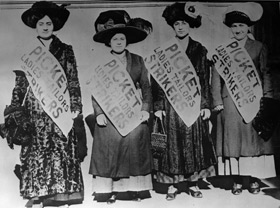The changes in codes and labor laws generated in the aftermath of the Triangle Fire had obvious beneficial effects on the safety and the working conditions of workers in New York State and across the country. Unfortunately, sweatshops and unsafe factory conditions persisted, and many factory owners continued to lock the doors of their shops. The reform impulse of the Progressive Era could not eliminate the resistance of real estate interests and manufacturers to the implementation of codes and safety devices. In some instances, these interests successfully obtained exemptions to such rules and neglected to comply with regulations. In addition, funding problems often plagued government agencies, especially during economic downturns, when budgets for inspectors were slashed. As a result, industrial accidents, often with loss of life, continued to occur. The ILGWU understood the challenges of enforcement very well, and insisted that workers themselves, through their labor movement, would have to incorporate safe conditions in their demands to their employers. In the words of Fannia Cohn, ILGWU Educational Department director, both unions and manufacturers had to "be made responsible for sanitary conditions and precautions against fire in the shops." The union would reach this goal through cooperation with employers' associations and by incorporating safety measures into collective bargaining agreements.
The ILGWU was actively engaged in helping monitor and report hazardous conditions in New York City garment factories before the Triangle fire. In 1910 it sponsored the Joint Board of Sanitary Control in the Cloak, Suit and Skirt Industry of Greater New York as part of the Protocol of Peace, a voluntary joint arbitration mechanism with employers. Representatives of the industry and of labor were to monitor sanitary conditions in factories, report on problems, and agree on corrective measures. Mindful that "no law is enforced which does not reflect public sentiment," the board included representatives from the public to help establish standards for the industry. The first report of the board was issued shortly after the Triangle fire, and presented the results of investigations conducted in the previous several months. The board investigated fire hazards and drew up a list of fifty-five unsafe shops, which was circulated among workers and sent to the Mayor and to the Building, Fire, and Police Departments. The Superintendent of Buildings did find those shops unsafe and issued orders of compliance with current regulations. Just a few months later, the Triangle fire showed that conditions were just as dangerous in the waist industry, which was later included in the monitoring system.
In the following years, the board warned against the "growing complacency and the false sense of security, which was assumed by the public because of the passage of fire laws." It continued to inspect conditions in factories, and documented the serious fire hazards still existing in old buildings, particularly in the loft district. As late as 1922, the board inspectors were still finding locked doors, obstructed fire escapes, narrow aisles, and lack of fire buckets. The board also successfully convinced employers to fund the fire drills program, and coordinated thousands of such drills in New York garment shops.
That not all was well in industrial safety became tragically clear again in 1958, when a fire at the Monarch garment shop on Broadway, in New York, killed 25 workers. Located in an old building loft, the garment factory was above a shop where an industrial oven had malfunctioned. Once again, the workers on the floor above were unable to escape a raging fire. The tragedy brought back the painful memories of the Triangle fire, and many asked why this sort of accidents could still occur. The ILGWU renewed its efforts to help monitor conditions in factories, and co-sponsored a very successful fire warden program in New York City garment shops, which involved thousands of union members. It also included fire prevention programs in collective bargaining agreements.
The Triangle fire became a central moment in the history of the labor movement and in particular of the ILGWU. It endured in the collective memory of its members as a symbol of the evils that made it necessary for workers to organize into unions. In their eyes, the death of these workers enabled the laws designed to protect workers' lives and well-being. As David Dubinsky, President of the ILGWU, said at the commemoration of the 50th anniversary of the fire in 1961: "These were our martyrs because what we couldn't accomplish by reasoning with the bosses, by pleading with the bosses, by arguing with the bosses, they accomplished with their deaths."

